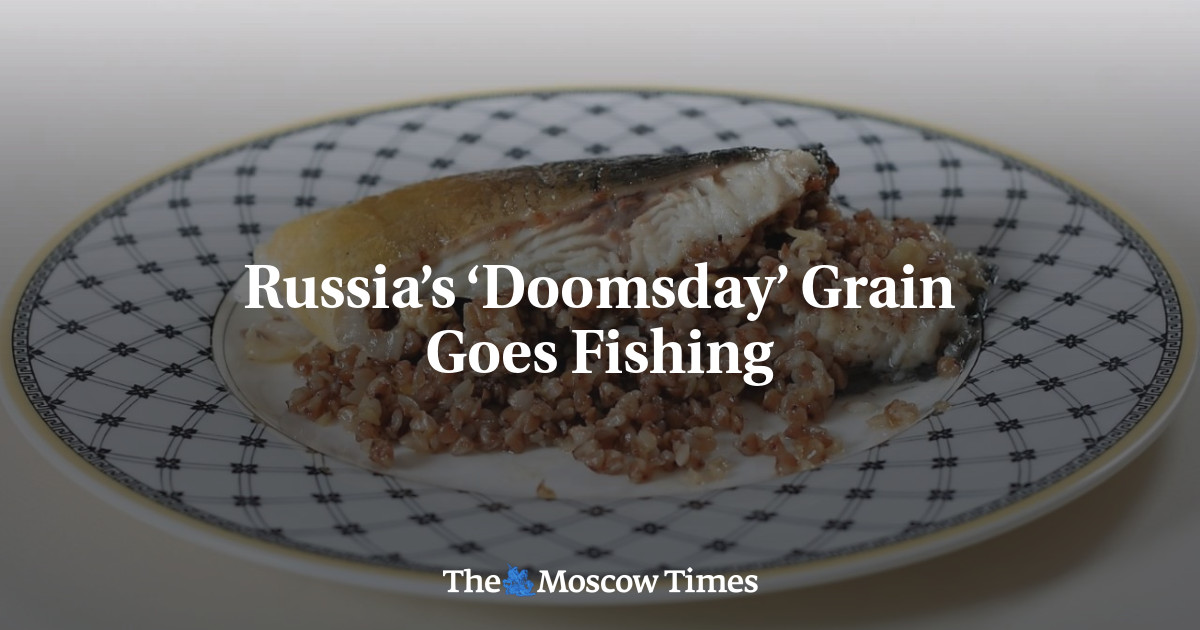
If you want to know the public mood in Russia, check out home supplies of buckwheat groats. When the war began, or when the Covid epidemic hit, demand for buckwheat soared. Some stores quickly ran out; other stores rationed sales — only five kilograms per person. In every difficult period in Russia, there is a “buckwheat panic.”
Buckwheat is popular for good reason. It is easy to prepare. Experienced housewives say that you can even prepare it without heat — just pour cold water over buckwheat groats in the evening and in the morning they’ll be ready to eat. We haven’t tried this technique, but we tend to trust the wisdom of people who survived socialism.
In Russian it’s easy to see the connection between Greeks and buckwheat — the word for buckwheat is гречка (grechka) which sounds like грек (Greek). One version has it that it appeared in what would become Russian lands in the 9th and 10th centuries when the princes Askold and Dir and then Oleg and Igor led bands of Slavs to conquer Constantinople. It was at this time that the Slavic peoples became interested in Orthodoxy. The Slavic princes were baptized, which led to the adoption of Orthodoxy as the state religion of Kyivan Rus in 988. This was followed by the establishment of Orthodox monasteries in the Slavic lands, where the monks were primarily from Byzantium, that is, they were Greek. Another version has it that they brought with them the grain they had grown and eaten in Asia Minor. And since it came from Greeks, it was called “grechka.”
These versions, however attractive, are probably legends developed later. Buckwheat groats are mentioned in Russian sources only starting in the 15th century. It probably came to the Slavic lands by several routes. In the 15th and 16th century Slavs got to know this grain better when they started to have closer contacts with the Tatars of the Volga region, where buckwheat grew wild. It probably began to enter Slavic cuisine after 1552, when the Khanate of Kazan was taken by Ivan the Terrible. Buckwheat groats were grown everywhere by the Tatars in that region — in fact, in many Russian villages it is still called “Tatar grain.”
Echoes of the spread of buckwheat to Slavic lands can even be found in Russian fairy tales. Writer Nikolai Teleshov wrote a tale about evil Tatars who kidnapped the daughter of the military leader Vseslav. Her name was Krupenichka (“little grain”). The mother manages to save the girl from the bitter fate of captivity with the help of an old wizard who turns her into a buckwheat grain carried by the wind to her homeland.
Buckwheat came to Western Europe a little later. The first mention of it in France dates back to the 16th century. It was called sarrasin or blé noir and was sown in Brittany. Even today Breton buckwheat pancakes are a local speciality and a favorite national dish. The French name for buckwheat “sarrasin” is derived from the Saracens the Crusaders fought against. Despite its popularity, buckwheat remained a “poor man’s dish” and did not figure in the haute cuisine that had been developing in France since the 17th century.
In Russia buckwheat is not just a grain eaten as porridge or a side dish for meat. Blinis are also made from buckwheat flour. Vegetarian cutlets are made with the cooked grains, and “Miner’s Soup” is made with buckwheat to give men energy before their shifts begin or restore their strength after a hard day’s work. It was even made into alcohol during the period of socialism. It’s used in all sorts of dishes, as our humorous photo below shows.
Stores in Europe and America often sell pale green buckwheat groats. Russian buckwheat is different — darker, with a brown tint. The reason is simple. Back in the 1950s under Nikita Khrushchev, a “historic” decision was made: buckwheat groats should be roasted and dried before being packaged and sold in shops. But our grandmothers still remember green buckwheat being sold in Soviet stores.
Today we can only speculate why the leadership made this decision. It was probably in order to make the product safer by drying it out, which would prevent mold form forming during transportation and storage. But many people liked the flavor of the roasted buckwheat groats: it was more intense and had an unusual aroma.
Writing about buckwheat groats calls to mind a 200-year-old recipe: carp stuffed with buckwheat groats, a recipe that is forgotten but shouldn’t be. In 1795 Vasily Lyovshin, author of “Russian Cookery,” wrote: “The fish is well known, found in fresh water and ponds with clean water. The best carp are large, well-fed and golden in color. Males have firmer meat. River carp are tastier than pond carp.” We chose a couple of beauties at the market.





